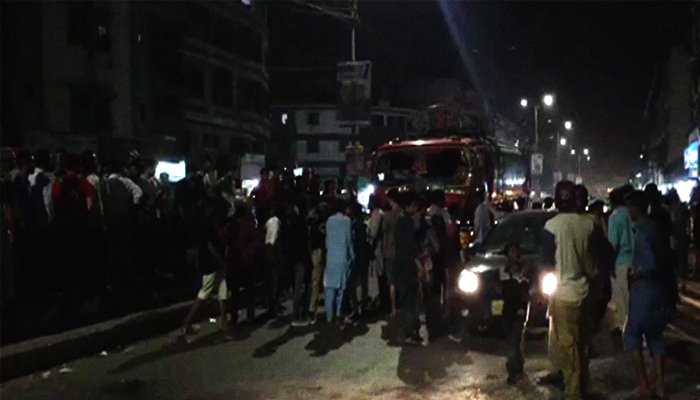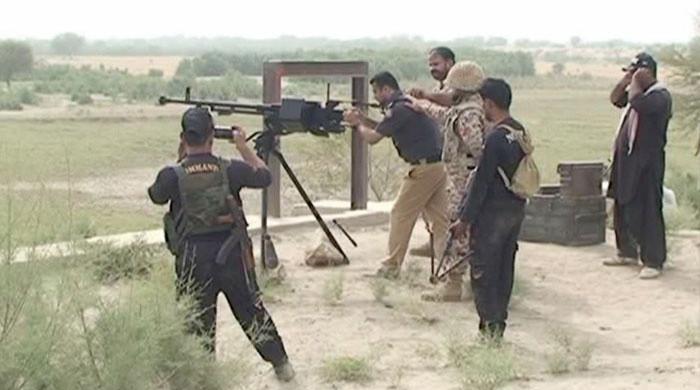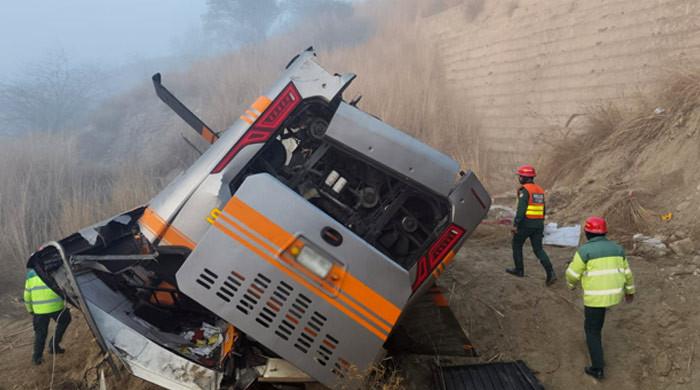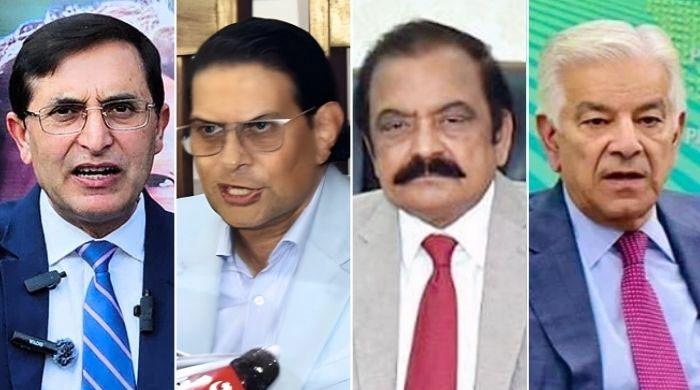Karachi feels the heat of loadshedding as KE, SSGC indulge in blame game
Loadshedding increases problems of COVID-19 patients, students undertaking online classes in Karachi
June 26, 2020

KARACHI: The sweltering heat combined with frequent loadshedding is making life difficult for residents in Karachi, as the K-Electric and the Sui Southern Gas Company (SSGC) continue to indulge in a blame game to ward off criticism.
The power issue has exacerbated the water shortage problem in the city as many people cannot operate their pumping machines in the absence of electricity. The problem of frequent power cuts, which was initially reported from the slum and underdeveloped areas of the city, has now engulfed the entire Karachi, including upscale localities such as Defence Housing Authority (DHA) and PECHS.
Meanwhile, the blame game between KE, the SSGC and federal and provincial governments continues without resolution. Citing reasons behind the load-shedding, KE, the sole power supplier to the city, said that they had been receiving 50 mmcfd RLNG less from the SSGC while the peak demand had crossed 3,450 megawatts in the city with a shortage of furnace oil in the market.
The SSGC, however, categorically refuted the KE’s claim and said that it had been supplying an additional 50 mmcfd RLNG to the power utility.
During this tussle between the gas and power utilities, Sindh Energy Minister Imtiaz Sheikh criticised the federal government for the power crisis in the city, saying that it has been the latter’s incompetence that has deprived Karachi residents of power during the lockdown period when the power consumption in factories and markets is already low.
Masses continue to suffer in the sweltering heat
One of the cases of extreme misery was witnessed in Defence View Phase-I on Thursday where the power supply was intermittently cut for more than 24 hours with brief periods of resumption.
One of the residents told The News how there was power at his home for just 30 minutes and then there was no electricity for an indefinite period. Another resident of Defence View, Iqra, said even the UPS at their house could not help them as its battery soon discharged due to the continuous absence of power. She added that there was no generator at her home that could provide them with relief during the hot summer.
Sharing his plight, Maani Ali from DHA Phase- VIII said they had been enduring unannounced load-shedding three to four times a day. “Mostly after 12 midnight, there are two power outages of one-and-a-half hours,” he explained, adding that the load-shedding in his area was completely unjustified as there were no line losses in DHA.
He said there were no illegal connections in the locality and most of the cables were already underground. “We don’t know why there are power failures of such long hours in Defence.”
Meanwhile, residents of areas such as Gulshan-e-Iqbal, Gulistan-e-Jauhar, and PECHS have also been facing frequent power outages that last for more than two hours. Those who are affected the most are the COVID-19 patients observing isolation and students taking online classes.
Shahid Faraz, a student of a private university who lives in Gulshan-e-Iqbal, shared how every morning load-shedding had been disrupting his online classes. “I am arranging money to buy a generator or UPS as I am facing an immense loss on a daily basis,” he said.
In the meantime, several protests were held in different parts of the city against the unabated load-shedding. Two protests were held on Shahabuddin Road and Albela Chowk on Thursday evening against prolonged power failure in these areas. A day earlier, a mob vandalised KE’s Valika grid station on Wednesday evening.
Sindh, Centre indulge in blame game
The Sindh energy minister took notice of the loadshedding problem in the city and said it was the incompetence of the federal government that had been making the people of Karachi suffer.
“Who is responsible for the shortage of furnace oil and gas?” he asked and demanded an inquiry into the matter. The National Electric Power Regulatory Authority (Nepra) should inquire into why the furnace oil was not imported before summer, Sheikh said.
Due to the lockdown, he said, there was already a decline in business activities and low power consumption in factories. “Despite all this, the increase in the duration of load-shedding is the sheer incompetence of the federal government,” he remarked, adding that there was fear of a further increase in COVID-19 patients in the city due to the load-shedding.
KE has no shortage of gas, says SSGC
The SSGC, in a statement, announced that it would supply additional gas to the power utility. It, however, maintained that KE had no shortage of gas. From 190 mmcfd, the SSGC said, it had increased the supply of gas to KE to 240 mmcfd.
An SSGC official said that due to the increase in temperature and shortage of furnace oil, an additional 50 mmcfd was being supplied to the power utility.
Originally published in The News









